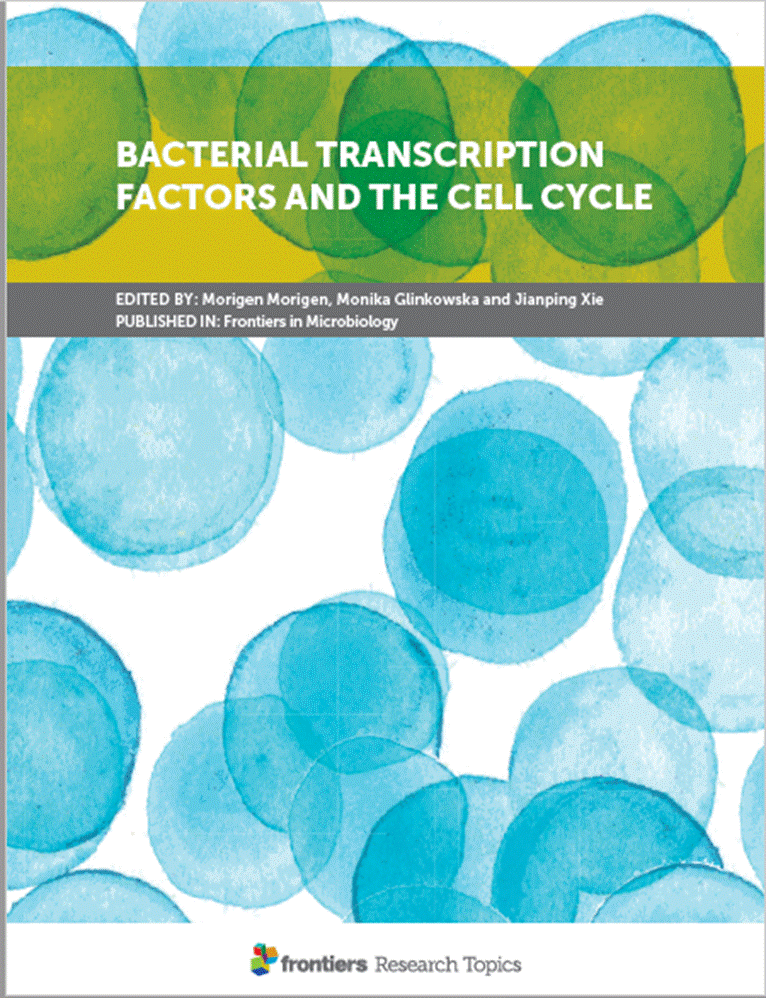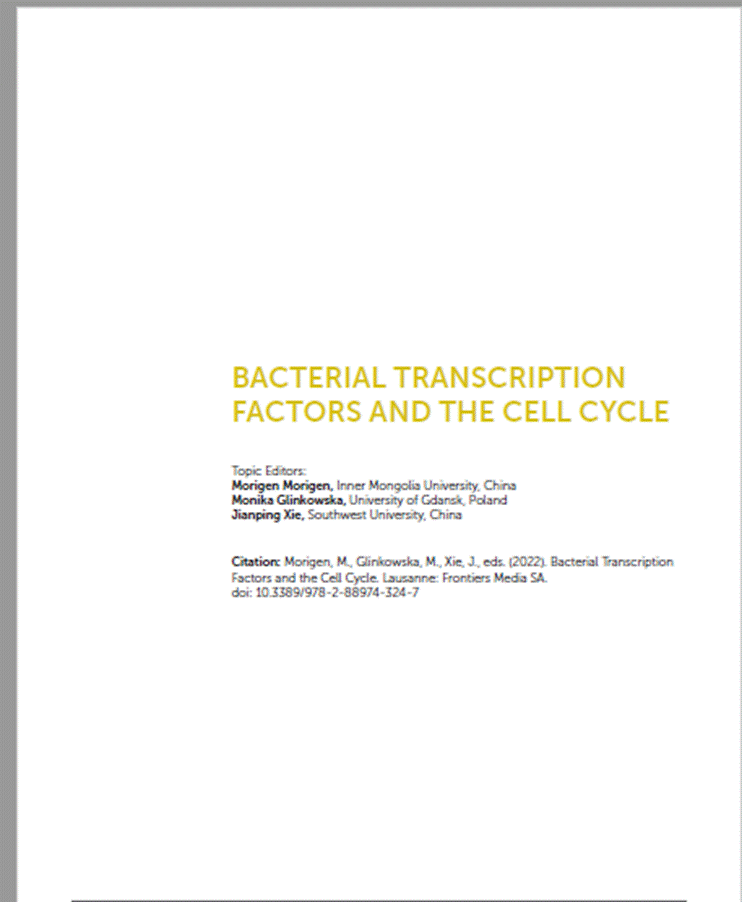Recently, Bacterial Transcription Factors and the Cell Cycle, an electronic book edited by Prof. Morigen of the School of Life Sciences of IMU, Doctor Monika Glinkowska at University of Gdansk and Prof. Xie Jianping with Southwest University, China, has been published in Frontiers in Microbiology which is a journal in Section 2 of Chinese Academy of Sciences Journal-Indexing System and whose effect factor is 5.64.
The book includes 15 articles of the authors from the United States of America, the Republic of Korea, Japan, China, India and Mexico. Centering on the structure, function and action mode of bacterial transcription factors and regulation of cell cycle, the articles identify the functions of such transcription factors as Mfd, DagR, Crp1, NprR and RsbW, characterize the function and action mode of the histone-like protein of YbaBCc, use the new technology of GeF-seq(base resolution) to identify the way the cell-cycle dependent histone-like protein of IHF couples chromesome and IHF’s function and characterize how ZapE interacts with cell-division protein FtsZ and how ZapE functions. The articles also discuss the relationship between the mapping of gene in chromesome and its function, how the replication of the onset protein of DnaA as the transcription factor regulate different cells, and how orisome is formed and how it regulates molecules in the process of replication. In addition, the articles compare the models for some cell cycle regulation theories.
Prof. Morigen has long been focusing on such aspects as the cell cycle of escherichia coli, gene expression regulation and coordination of cell cycle procession. His main research achievements are as follows. (1) He has found that if more datA strains are replicated, SOS will be caused, the replication fork will be less stable and the replication intiation and cell division will be postponed. He has, for the first time in the world, proved that the deletion of datA sequences will result in the replication intiation of rifampin resistant strains. (2) He has also systematically elaborated on the relationship between the structure of the replication fork and the way of replication and holds that when cells grow fast, two or more replication forks resulting from the same replication origin may be organized together by protein SeqA. He has also found that fast replication results in the splitting of replication forks and their high-frequency simultaneous mutation. (3) He has elaborated on the regulation of cell cycle by aspartic acid metabolism induced by AspC. (4) He has elaborated on the spatial control mechanism of gene expression, i.e. identification of target gene expression time by the interaction between transcription factor mapping and chromosomes on the old cell pole during the particular time of cell cycle. (5) He has found and revealed the protein DnaA’s control and biological role for SOS response. (6) He has found the QseB/Qsec’s modulation of dnaA expression and revealed the control mechanism.


URL:https://www.frontiersin.org/research-topics/14246/bacterial-transcription-factors-and-the-cell-cycle

